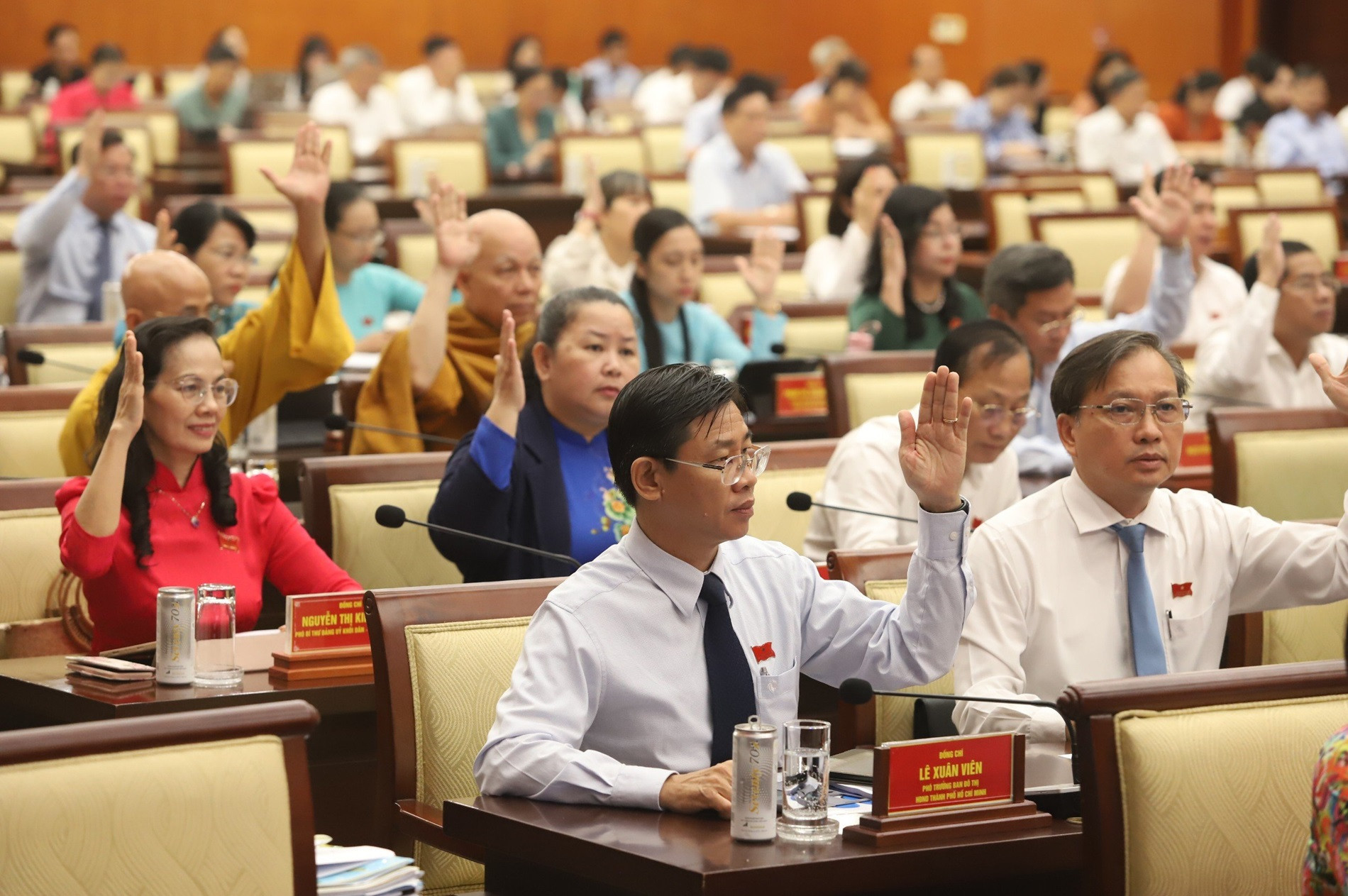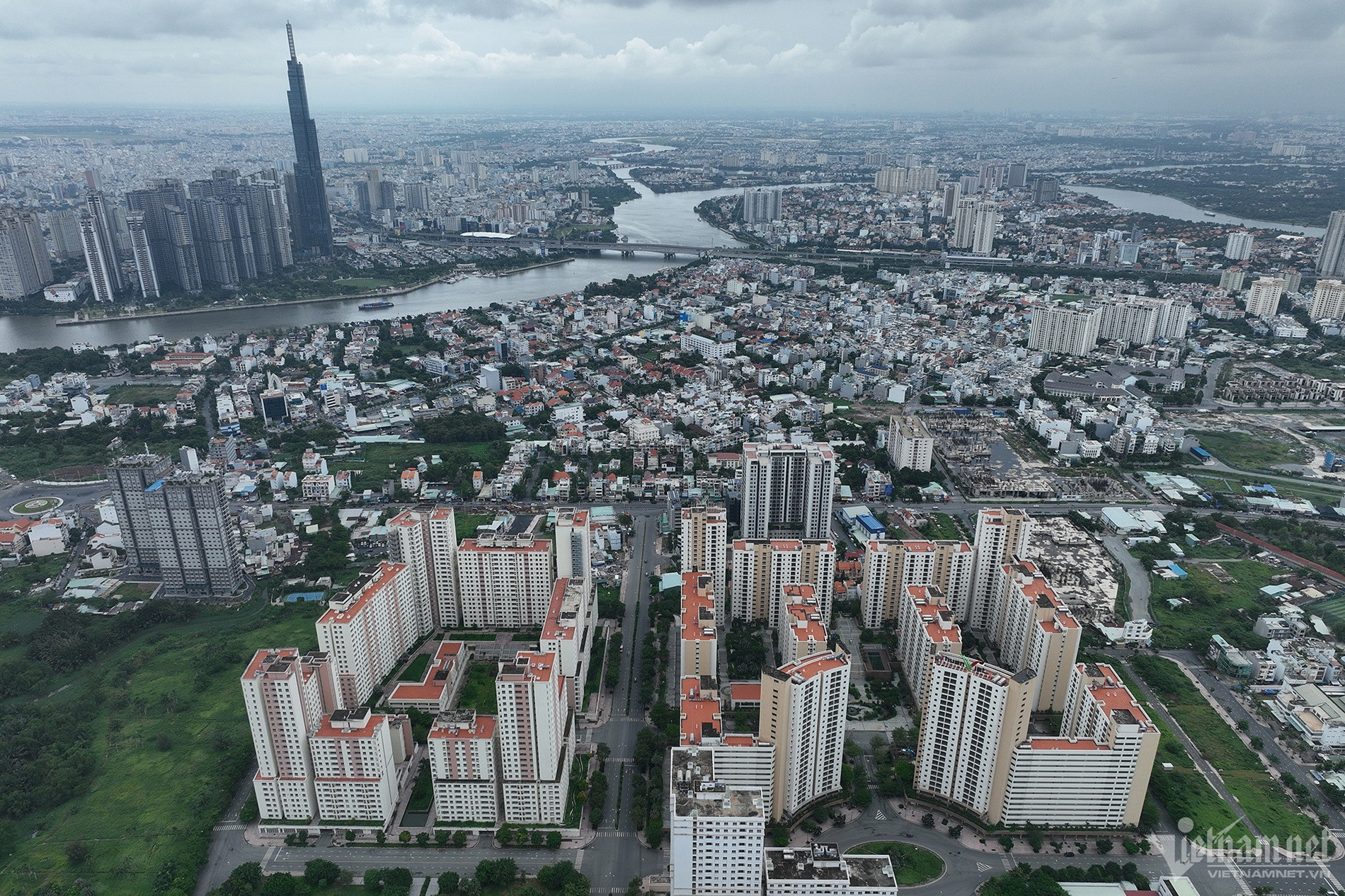
This morning (June 22), at the 16th session, delegates of the Ho Chi Minh City People's Council unanimously approved the dossier for the Ho Chi Minh City Planning for the period 2021-2030, with a vision to 2050.
During the session, a representative of the Ho Chi Minh City People's Committee presented two spatial development scenarios based on national and regional corridors.
In scenario 1, the city will form a central urban area (including 16 districts), a parallel urban area in Thu Duc city, and 5 satellite cities (Cu Chi, Hoc Mon, Binh Chanh, Nha Be, and Can Gio).
In scenario 2, the city will form a central urban area (including 15 districts), Thu Duc city, and 3 parallel urban areas: Cu Chi-Hoc Mon, Binh Chanh, and Nha Be-District 7-Can Gio.
The People's Committee proposed scenario 1 due to its high feasibility, suitability for the planning period, and alignment with the administrative unit arrangement plans for the city.
Previously, the Ho Chi Minh City People's Committee developed the Project to adjust the Master Plan to 2040, with a vision to 2060. According to this Project, the city is divided into 5 urban areas, 3 anti-flooding areas, and 3 underground space areas.

Five urban areas include:
1. Central urban area: Including districts 1, 3, 4, 5, 6, 8, Binh Thanh, Phu Nhuan, Tan Binh, Go Vap, Binh Tan, part of District 12. Total area: 17,000 hectares, population: 4.5 million (2019).
2. Eastern urban area: Thu Duc city, total area: 21,000 hectares, population: 1.1 million (2019).
3. Northern-Northwest urban area: Including Cu Chi district, Hoc Mon district, part of District 12. Total area: 58,500 hectares, population: 1.4 million (2019).
4. Western urban area: Including most of Binh Chanh district. Total area: 23,300 hectares, population: 840,000 (2019).
5. Southern urban area: Including District 7, Nha Be District, part of Binh Chanh District, and Can Gio District. Total area: 93,300 hectares, population: 1.2 million (2019).
Economic development goals
The Ho Chi Minh City People's Committee outlined three economic development scenarios:
- Scenario 1: Current growth model with innovative strategies. GRDP growth: 5.3% (2021-2025), 7.9% (2026-2030), 6.6% (2021-2030).
- Scenario 2: Innovative growth model with economic structure shift. GRDP growth: 7.5-8.0% (2021-2025), 9.5-10.0% (2026-2030), 8.5-9.0% (2021-2030).
- Scenario 3: New economic models for breakthroughs. GRDP growth: 8.1% (2021-2025), 12.8% (2026-2030), 10.5% (2021-2030).
The People's Committee proposed scenario 2, targeting an average GRDP growth rate of about 9.0% per year for 2021-2030, aiming for a GRDP per capita of $14,700-15,400 by 2030.
Ho Chi Minh City Chairman Phan Van Mai emphasized that after the People's Council approval, the city will refine the dossier and submit it to the Prime Minister. The approved planning will serve as the basis for making a master plan, implementing lower-level plans, and developing mechanisms, policies, and solutions to attract investment.
By 2050, Ho Chi Minh City aspires to be an attractive and sustainable global city, an economic, financial, and service center of Asia, characterized by distinctive economic and cultural development, high quality of life, and a core urban area in the Southeast region.
Ho Van